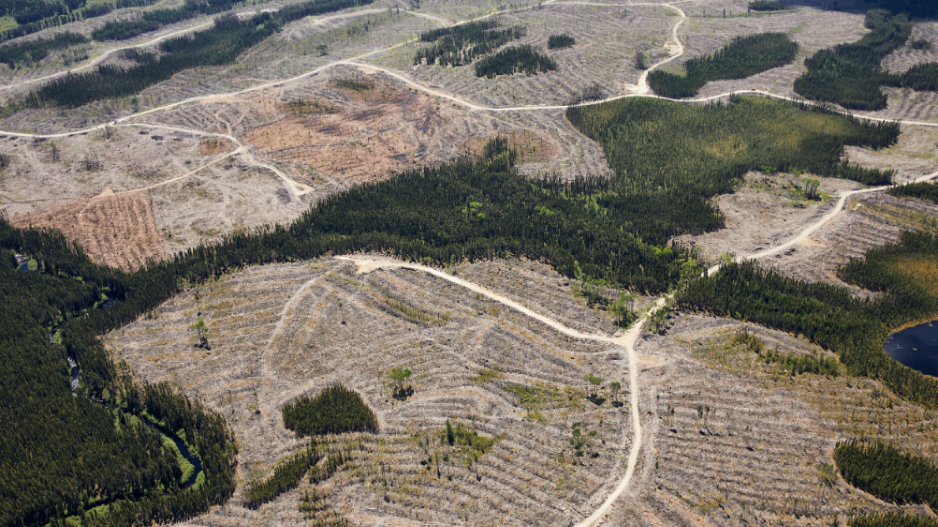Logging in Canada produces almost as much greenhouse gas emissions as Alberta’s oil sands, a new report by the U.S. based Natural Resource Defense Council and Nature Canada.
In Lost in the Woods, the two environmental groups argue that Canada is not reporting the real emissions that result from forestry.
“The Government of Canada does not transparently report emissions from the logging industry in its annual national GHG inventory,” the groups say in a news release accompanying the report. “Nor does the government’s 2030 Emissions Reduction Plan include a strategy for reducing logging emissions, leaving a significant hole in Canada’s plan to address its climate impact.”
“While Canada has committed to cut GHG emissions by at least 40% from 2005 levels by 2030, meeting this target will require the government to integrate the logging industry, as one of Canada’s highest-emitting sectors, into this strategy, and take action to reduce logging’s emissions."
The report estimates the real GHG emissions from logging in Canada was 75 million tonnes of CO2 in 2020, "roughly equal to emissions from Canada’s oil sands operations."
The report essentially takes issue with the way Canada calculates and reports greenhouse gas emissions in its annual GHG inventory.
Essentially, it argues Canada should be reporting only emissions from logging, not the “removals” of carbon through managed forests.
Managed forests include working forests that are actively logged and primary forests that have not yet been logged, as well as parks and other managed lands where logging does not take place and where growing trees act as carbon sinks. Emissions from logging are balanced off of the carbon removals of managed forests. Canada follows guidelines for its calculations that are established by international bodies.
“Each country under the guidelines…is supposed to report emissions and removals from anthropogenic activities,"said Werner Kurz, senior research scientist with the Canadian Forest Service of Natural Resources Canada and eight-time contributor to the Intergovernmental Panel on Climate Change. "Anthropogenic activities in the forest sector are limited to those in managed forests.
“What they’re doing is they’re trying to argue that, contrary to international reporting guidelines, we must identify logging emissions, not those of forest management, and we must only report what has regrown since harvest, and not the sink of the total managed forest. The number that we report on the emissions has to be balanced by the regrowth of the managed forests, not just the land that has been previously logged."
Canada follows international guidelines for reporting its GHG emissions, including forestry emissions, and they are subject to periodic reviews by teams of international experts, Kurz said.
“What we’re doing is consistent with what the rest of the world is doing," he said. "Nobody reports in isolation logging emissions. Everybody reports emissions and removals from forest management.”
The Forests Products Association of of Canada (FPAC) calls the Lost in the Woods report "misleading and damaging."
"While we were disappointed to see another misleading report on forestry issued by the U.S.-based Natural Resources Defense Council (NRDC) and Nature Canada, we were not surprised," said FPAC president Derek Nighbor. "Both NRDC and Nature Canada fundraise on their anti-Canadian forestry campaign rhetoric."
The Lost in the Woods report used Canada's own GHG inventory data to arrive at its calculations. It took the total emissions from logging, subtracted the carbon sequestered from long-lived wood products and also subtracted carbon removals from regrowth.
But according to Kurz, the report only considers regrowth from actively logged managed forests, and does not factor in the additional sinks from managed forests that are not harvested, including primary forests that have not been previously logged, as well as forests that may never will be logged.
"What Canada is doing, and what other countries are doing, is we're looking at the managed forest, and for that managed forest, we estimate all emissions and removals, whether these are from forest regrowth, from slash burning, from the net impacts of fire suppression or insect suppression. It's the sum of the emissions and regrowth.
"What they want us to do is to basically say 'you can only report emissions and subsequent regrowth on lands that have already been harvested,'" Kurz said. "What they're saying is you must isolate the effects of logging only, and you can't look at the effects of forest management as a land management practice, yet that's what the guidelines tell us to do.
"In British Columbia, only about 40% of the land base is timber harvest land base. So there's a very large part of managed forest that will never be harvested, and that's part of the overall management.
"They don't want the sinks counted because they're saying they're not part of logging. And we're saying they're part of forest management."




